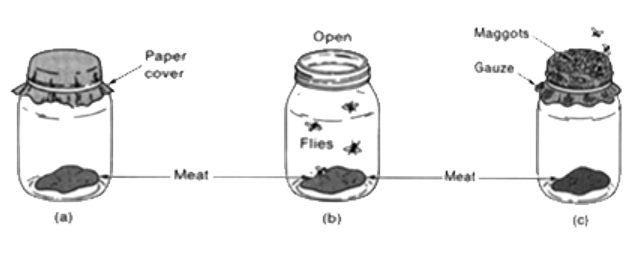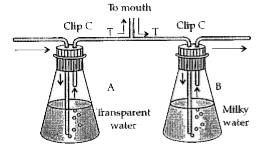Explain the experiment performed be Griffith on Streptococcus pneumonia. What did he conclude from this experiment?
Name the three scientists who followed up Griffith's experiments.
What did they conclude and how?
The bacterium Diplococcus pneumoniae causes pneumonia in humans. Frederick Griffith observed two strains of this bacteria. One strain called the smooth type (S) has polysaccharide forming a large capsule around the cell. The colony of such cells has a glistening appearance. The other strain bacterial cells do not have the polysaccharide layer and the colony formed. by these cells has an irregular appearance and is called the rough type (R). The S-strain is virulent while the R-strain is non-virulent.

In his experiments Griffith injected mice in the lab with live R-type of bacteria. They did not suffer from the disease. When he injected .S.. type of bacteria, the mice died from the disease. However when heat killed S-type of bacteria were injected into the mice, they did not suffer from pneumonia. Then he injected the mice with a mixture of living R-type (non virulent) with heat-killed S-type (virulent) bacteria, the mice suffered from the disease and died. Griffith observed that in the blood of dead mice, both R & S type of bacteria were present. He thus concluded that heat killed smooth type bacteria caused a transformation of the living rough type bacteria. This was described as Griffith effect or bacterial transformation. This experiment suggested that DNA and not proteins is the genetic material.
Topper's Solved these Questions
- SAMPLE PAPER 2014Book:ICSEChapter:SAMPLE PAPER 2014Exercise:PART II (50 Marks) SECTION-B
Explore 9 Videos
- SAMPLE PAPER 2 (BIOLOGY)Book:ICSEChapter:SAMPLE PAPER 2 (BIOLOGY)Exercise:QUESTIONS (CHOOSING THE CORRECT OPTION)
Explore 66 Videos
- SAMPLE PAPER 2015Book:ICSEChapter:SAMPLE PAPER 2015Exercise:PART II (50 Marks) SECTION-C
Explore 9 Videos
Similar Questions
What did Engelmann observe from his prism experiments
View SolutionObserve the picture below and state the name the of the scientist/s who performed this experiment ?

View SolutionWhat did Miller obtain from his experiment simulating conditions of early earth?
View SolutionWho performed ‘Blender experiment’ with respect to DNA? What was the objective of this experiment? Explain the procedure in detail.
View SolutionWhat is the result of transformation experiment of Griffith :-
View SolutionWhat is the basic concept of transformation experiment of Griffith:-
View SolutionWhat is the inference extracted from Griffith's transformation experiments?
View SolutionIn a series of experiments with Streptococcus and mice F. Griffith concluded that R-strain bacteria had been transformed. Explain.
View SolutionStudy the experimental set-up given below and answer the following questions:

What is the aim of the experiment shown above ?
View SolutionWrite the name of gaseous mixture taken by Miller in his experiment. At what temperature Miller performed its experiment
View Solution